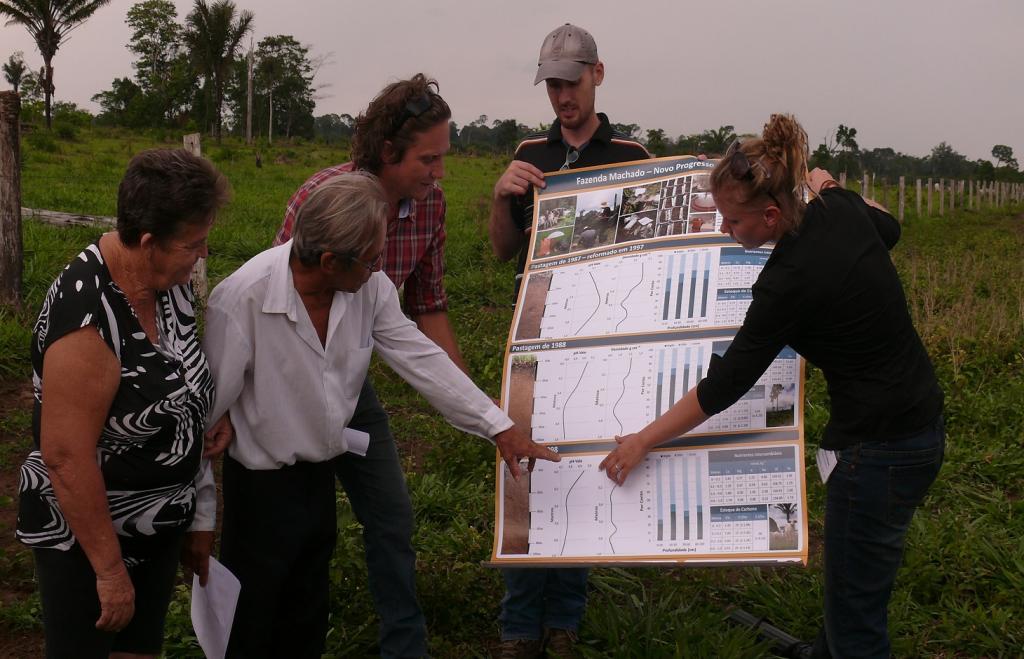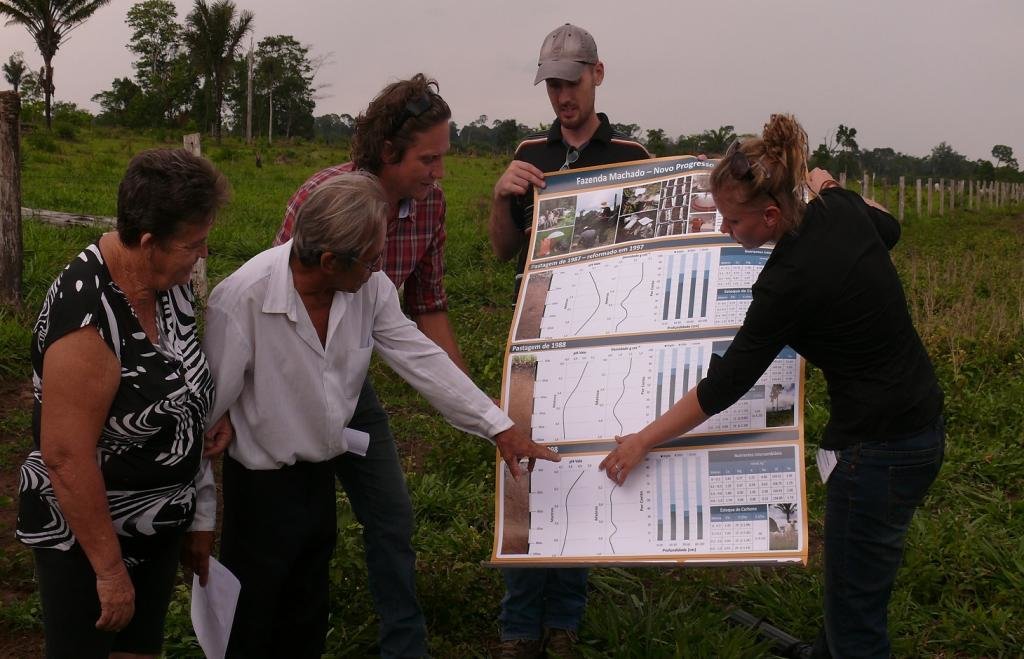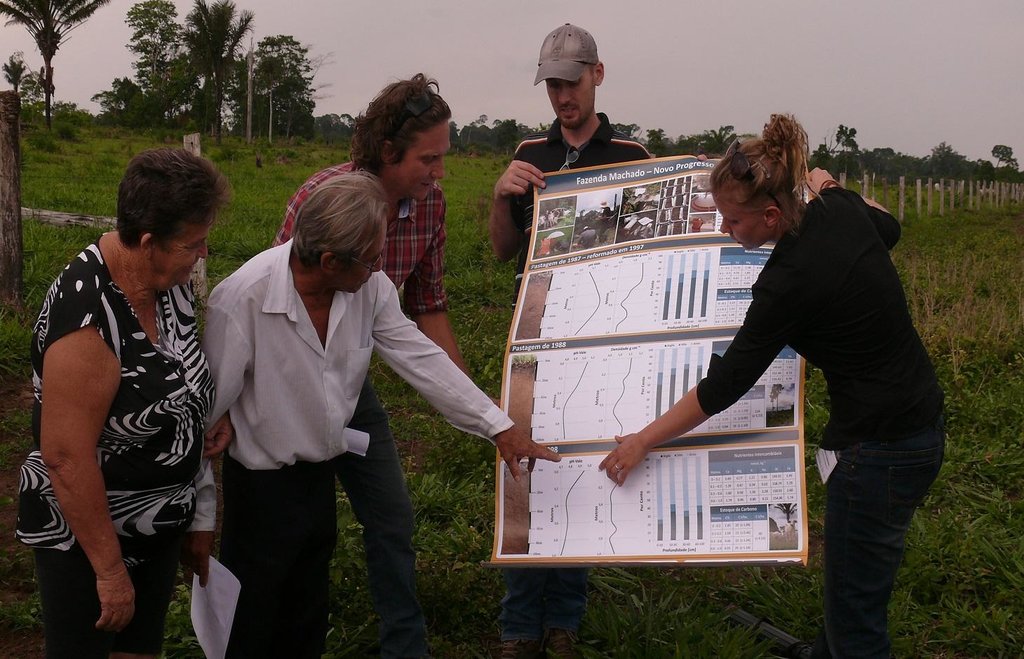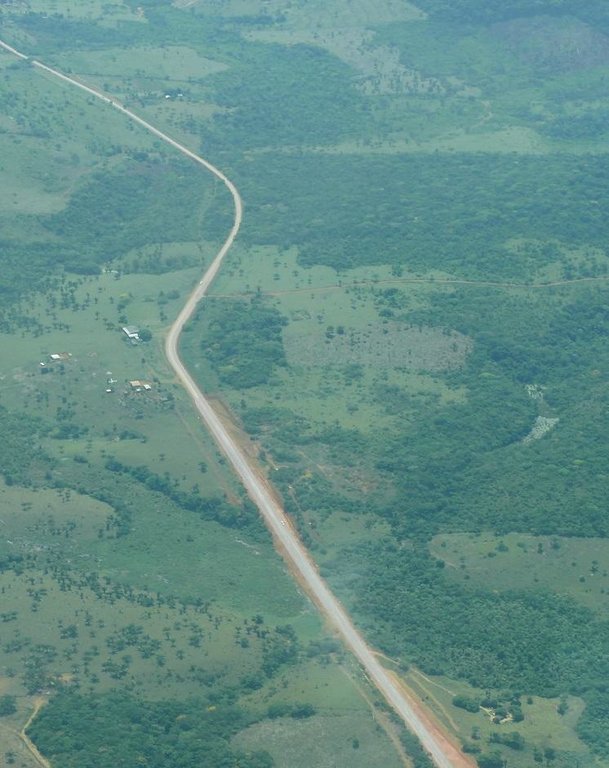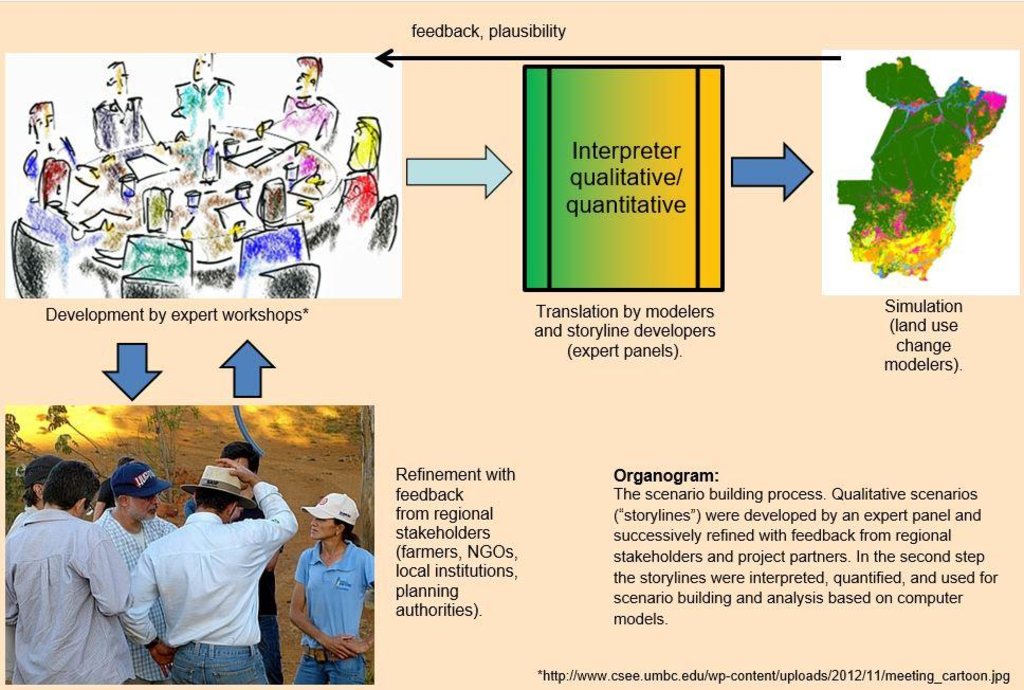From storylines to scenarios: raising awareness and decision support [البرازيل]
- تاريخ الإنشاء:
- تحديث:
- جامع المعلومات: Jan Goepel
- المحرر: –
- المُراجع: David Streiff
approaches_2616 - البرازيل
عرض الأقسام
توسيع الكل طي الكل1. معلومات عامة
1.2 تفاصيل الاتصال بالأشخاص الرئيسيين لمصدر المعلومات والمؤسسات المعنية بتقييم وتوثيق النهج
متخصص في الإدارة المستدامة للأراضي:
متخصص في الإدارة المستدامة للأراضي:
Gil Juliana
julianagil@uol.com.br
Embrapa Rice & Beans,
البرازيل
Guggenberger Georg
Leibniz University Hannover
ألمانيا
متخصص في الإدارة المستدامة للأراضي:
Klingler Michael
University of Innsbruck
ألمانيا
متخصص في الإدارة المستدامة للأراضي:
Lakes Tobia
Humboldt-University Berlin
متخصص في الإدارة المستدامة للأراضي:
Böhner Jürgen
University Hamburg
ألمانيا
متخصص في الإدارة المستدامة للأراضي:
Schaldach Rüdiger
University Kassel
ألمانيا
متخصص في الإدارة المستدامة للأراضي:
Siebold Matthias
University Hohenheim
ألمانيا
متخصص في الإدارة المستدامة للأراضي:
Nendel Claas
Leibniz Centre for Agricultural Landscape Research (ZALF)
ألمانيا
متخصص في الإدارة المستدامة للأراضي:
Schönenberg Regine
Free University Berlin
ألمانيا
متخصص في الإدارة المستدامة للأراضي:
Gerold Gerhard
Georg August University Göttingen
ألمانيا
اسم المشروع الذي سهّل توثيق/تقييم النهج (إذا كان ذلك على صلة)
Carbon optimized land management strategies for southern Amazonia (CARBIOCIAL / GLUES)اسم المؤسسة (المؤسسات) التي سهلت توثيق/تقييم النهج (إذا كان ذلك على صلة)
Georg August Universität Göttingen (Georg August Universität Göttingen) - ألمانيااسم المؤسسة (المؤسسات) التي سهلت توثيق/تقييم النهج (إذا كان ذلك على صلة)
Leibniz Institute for Regional Geography (IfL) - ألمانيااسم المؤسسة (المؤسسات) التي سهلت توثيق/تقييم النهج (إذا كان ذلك على صلة)
Humboldt Universität zu Berlin (HU Berlin) - ألمانيااسم المؤسسة (المؤسسات) التي سهلت توثيق/تقييم النهج (إذا كان ذلك على صلة)
Universität Kassel - ألمانيااسم المؤسسة (المؤسسات) التي سهلت توثيق/تقييم النهج (إذا كان ذلك على صلة)
Universität Hamburg (UHH) - ألمانيا1.3 الشروط المتعلقة باستخدام البيانات الموثقة من خلال WOCAT
متى تم تجميع البيانات (ميدانيا)؟:
18/06/2016
يوافق جامع المعلومات والشخص (لاشخاص) الرئيسي لمصدر المعلومات على الشروط المتعلقة باستخدام البيانات الموثقة من خلال WOCAT:
نعم
2. وصف نهج الإدارة المستدامة للأراضي
2.1 وصف موجز للنهج
Investigating viable carbon-optimized land management strategies, which maintain or improve ecosystem function, under changing climate conditions in the Southern Amazon - using regional scenarios generated from storylines.
2.2 وصف تفصيلي للنهج
وصف تفصيلي للنهج:
Aims / objectives: One objective of the Carbiocial project, in close cooperation with its Brazilian partner project Carbioma, is to explore how land use change in one of Brazil’s most dynamic regions will develop in the next 30 years and how it will be affected by the implementation of land-use planning options and conservation policies. For this purpose a set of scenarios was created. The scenarios portray different plausible development pathways for the region. Each scenario consists of a storyline: a brief narrative of the future. At this level farmers and institutions are involved. An expert panel translated the findings of several stakeholder workshops and extensive stakeholder and expert interviews, conducted in 2012, into qualitative information needed to elaborate these scenarios. Four storylines emerged: (1) “business-as-usual”; (2) sustainable, extensive use of the Amazon; (3) legal intensification; (3) illegal intensification.
Methods: It was agreed that the communication between qualitative social science data and quantitative data had to be considered carefully. A blend of the required input factors for the models was agreed as guiding principles for all storylines: these were: population, agrarian production, livestock, agrarian and environmental policies, protected areas, infrastructure, impact of climate change (mitigation/adaptation). In a second step, qualitative data had to be added to the models; to limit bias, all available German experts on Southern Amazonia participated in a day-long (and quite controversial) brainstorming session producing content for the four storylines.
After translating the results into Portuguese the outcome was discussed with representatives of government and NGOs to discuss their plausibility and to modify accordingly. The input of local stakeholders was included on the basis of discussions and qualitative interviews. Generally speaking, the feedback loops with Brazilian stakeholders’ happened rather arbitrarily. Participation could have been better if planned more methodically and earlier.
The three hypothetical storylines describe different pathways of future regional development within the two states. Due to the strong linkages of Southern Amazonia to global markets (e.g. exports of soybean and meat) it was necessary to portray this dependency as one important determinant within the scenarios. Also, law enforcement of the existing legal situation was considered: more than 40% of Amazônia comprises protected areas. In order to portray the possibility of progressive environmental and indigenous legislation, a vibrant civil society, and well-institutionalized public prosecutors, a sustainability scenario was designed.
The next step was the quantification of the qualitative information to facilitate a simulation-based scenario analysis. Simulation models will be combined as software packages to support the decision-taking process from local to landscape and regional scale. All research and implementation activities include direct involvement of the stakeholders. Field experiments for improving C storage and ecosystem function will be performed in cooperation with an NGO founded by the farmers of Mato Grosso.
Other important information: A set of land use maps was generated to depict scenarios from 2010 to 2030. The objective of this modelling and mapping exercise is to support decision-makers to better interpret the scenarios and their implications. These new layers of information will facilitate further model or GIS-based analysis of land use change impacts on the regional carbon balance and the loss of biodiversity, and may act as a test-bed for the development of strategies towards sustainable land management.
2.3 صور عن النهج
2.5 البلد/المنطقة/المواقع التي تم تطبيق النهج فيها
البلد:
البرازيل
المنطقة/الولاية/المحافظة:
Mato Grosso/Pará, Brazil
Map
×2.6 تواريخ بدء وإنهاء تنفيذ النهج
أشر إلى سنة البدء:
2011
سنة الإنهاء (إذا لم يعد النهج مطبقًا):
2016
2.7 نوع النهج
- قائم على مشروع/برنامج
2.8 الغايات/الأهداف الرئيسية للنهج
The Approach focused mainly on other activities than SLM (carbon-optimized land management)
The joint main goals are 1) to perform region-specific analyses in order to improve and apply interdisciplinary sets of models of land use impacts on carbon stocks, water and GHG balances, 2) to develop and optimize land management strategies that minimize carbon losses and GHG emissions, and maximize carbon sequestration, 3) to assess the trade-offs between land management options and socio-economic impacts in terms of GHG reduction, profitability, ecological sustainability, and last but not least, 4) to support the Brazilian partners to implement the optimal techniques in practice, considering the soybean value chain and overall carbon balance.
The SLM Approach addressed the following problems: High loss of vegetative and soil carbon due to agricultural expansion (deforestation), agricultural emissions, biodiversity loss.
2.9 الظروف التي تمكن أو تعيق تنفيذ التقنية/التقنيات المطبقة بموجب النهج
المعايير والقيم الاجتماعية /الثقافية/ الدينية
- معيق
Acceptance of research results
Treatment through the SLM Approach: Dissemination of research results in the form of policy briefs (short graphical illustration of results) and “output-stick” (USB stick with more detailed research results).
الإطار القانوني (حيازة الأراضي، وحقوق استخدام الأراضي والمياه)
- معيق
Land tenure
Treatment through the SLM Approach: None
The existing land ownership, land use rights / water rights greatly hindered the approach implementation Especially in Pará, land tenure rights are uncertain and lead to land speculation with resultant land degradation and deforestation.
3. المشاركة وأدوار الأطراف المعنية
3.1 أصحاب المصلحة المعنيون بالنهج وأدوارهم
- مستخدمو الأراضي المحليون/المجتمعات المحلية
- المنظمات المجتمعية
Indigenous groups were involved in stakeholder workshops with the aim of discussing different storyline options, and in the following feedback loops discussing the resulting storylines.
- متخصصون في الإدارة المستدامة للأراضي / مستشارون زراعيون
- الحكومة الوطنية (المخططون، صانعو القرار)
planning authorities
3.2 انخراط مستخدمي الأراضي المحليين/المجتمعات المحلية في المراحل المختلفة للنهج
| انخراط مستخدمي الأراضي المحليين/المجتمعات المحلية | حدد من شارك وصف الأنشطة | |
|---|---|---|
| المبادرة/التحفيز | تفاعلي | Land users and planning authorities; identification of research priorities, state-of-the-art of agricultural practices, identification of problems. |
| التخطيط | غير موجود | |
| التنفيذ | غير موجود | |
| الرصد/التقييم | غير موجود | |
| Research | سلبي | Research plots for demonstration. |
3.3 مخطط التدفق (إذا كان متاحًا)
الوصف:
The scenario building process. Qualitative scenarios (“storylines”) were developed by an expert panel and successively refined with feedback from regional stakeholders and project partners. In the second step the storylines were interpreted, quantified, and used for scenario building and analysis based on computer models.
3.4 اتخاذ القرار بشأن اختيار تقنية/تقنيات الإدارة المستدامة للأراضي
حدد من الذي قرر اختيار التقنية/التقنيات التي سيتم تنفيذها:
- متخصصون في الإدارة المستدامة للأراضي بشكل أساسي، بعد التشاور مع مستخدمي الأراضي
اشرح:
Decisions on the method of implementing the SLM Technology were made by by land users* alone (self-initiative / bottom-up)
4. الدعم الفني وبناء القدرات وإدارة المعرفة
4.1 بناء القدرات/التدريب
هل تم تقديم التدريب لمستخدمي الأراضي / الأطراف المعنيين الآخرين؟:
نعم
حدد من تم تدريبه:
- مستخدمو الأراضي
شكل التدريب:
- من مزارع إلى مزارع
- مناطق العرض
- اجتماعات عامة
المواضيع المغطاة:
Training focused on raising awareness of the consequences of “business-as-usual” behavior compared with other scenarios.
4.2 خدمة استشارية
هل يملك مستخدمو الأراضي وصولا إلى خدمة استشارية؟:
نعم
حدد ما إذا كانت الخدمة الاستشارية متوفرة:
- في حقول مستخدمي الأراضي
وصف/تعليقات:
Name of method used for advisory service: dissemination of research results in the form of policy briefs and more detailed “output sticks”
Advisory service is quite adequate to ensure the continuation of land conservation activities
4.3 تعزيز المؤسسات (التطوير التنظيمي)
هل تم إنشاء أو تعزيز مؤسسات من خلال هذا النهج؟:
- لا
4.4 الرصد والتقييم
هل يشكل الرصد والتقييم جزءا من النهج؟:
نعم
التعليقات:
bio-physical aspects were ad hoc monitored by project staff through observations
bio-physical aspects were ad hoc monitored by project staff through measurements
socio-cultural aspects were ad hoc monitored by project staff through observations
socio-cultural aspects were ad hoc monitored by project staff through measurements
There were few changes in the Approach as a result of monitoring and evaluation: Dissemination; form of dissemination was adjusted according to the requirements of target groups.
There were no changes in the Technology as a result of monitoring and evaluation
4.5 البحوث
هل كانت البحوث جزءًا من النهج؟:
نعم
حدد المواضيع:
- علم الايكولوجيا
- تكنولوجيا
أعط تفاصيل إضافية وأشر إلى من قام بالبحوث:
Research was carried out both on station and on-farm
5. التمويل والدعم المادي الخارجي
5.1 الميزانية السنوية لمكون الإدارة المستدامة للأراضي في النهج المذكور
إذا لم تكن الميزانية السنوية الدقيقة معروفة، قم بالإشارة إلى نطاقها:
- 1,000000-100،000
التعليقات (على سبيل المثال المصادر الرئيسية للتمويل/الجهات المانحة الرئيسية):
Approach costs were met by the following donors: international (German Ministry of Education and Research BMBF): 100.0%
5.2 الدعم المالي/المادي المقدم لمستخدمي الأراضي
هل حصل مستخدمو الأراضي على دعم مالي/ مادي لتنفيذ التقنية/ التقنيات؟:
كلا
5.4 الائتمان
هل تم توفير ائتمان في إطار نهج أنشطة الإدارة المستدامة للأراضي؟:
كلا
6. تحليل الأثر والتصريحات الختامية
6.1 آثار النهج
هل ساعد النهج مستخدمي الأراضي على تنفيذ وصيانة تقنيات الإدارة المستدامة للأراضي؟:
- لا
- نعم، قليلا
- نعم، باعتدال
- نعم، إلى حد كبير
Identification of method of applying organic matter to soil; identification of kind of agriculture most suitable for specific region/area; type of crop sown; crop sowing dates; economic return/economic optimization.
هل ساهم النهج في تمكين الفئات المحرومة اجتماعيا واقتصاديا؟:
- لا
- نعم، قليلا
- نعم، باعتدال
- نعم، إلى حد كبير
هل أدى النهج إلى تحسن في مسائل حيازة الأراضي / حقوق المستخدمين التي أعاقت تنفيذ تقنيات الإدارة المستدامة للأراضي؟:
- لا
- نعم، قليلا
- نعم، باعتدال
- نعم، إلى حد كبير
Research had no effect on land tenure; research was not aimed at solving the problem, rather research helped to identify the problem. The problem is likely to be overcome in the near future. reforms of land tenure rights underway
Did other land users / projects adopt the Approach?
- لا
- نعم، قليلا
- نعم، باعتدال
- نعم، إلى حد كبير
Did the Approach lead to improved livelihoods / human well-being?
- لا
- نعم، قليلا
- نعم، باعتدال
- نعم، إلى حد كبير
Did the Approach help to alleviate poverty?
- لا
- نعم، قليلا
- نعم، باعتدال
- نعم، إلى حد كبير
6.2 المحفز الرئيسي لقيام مستخدمي الأراضي بتنفيذ الإدارة المستدامة للأراضي
- زيادة الإنتاج
- زيادة الربح (القدرة)، وتحسين نسبة التكلفة إلى العائد
- المدفوعات/ الإعانات
- القواعد واللوائح (الغرامات) / الإنفاذ
- well-being and livelihoods improvement
6.3 استدامة أنشطة النهج
هل يمكن لمستخدمي الأراضي المحافظة على استدامة ما تم تنفيذه من خلال النهج (بدون دعم خارجي)؟:
- نعم
إذا كانت الإجابة بنعم، صف كيف:
No-till agriculture, crop rotations, recommended sowing dates, expanding agricultural land according to crop yield information, and information regarding negative effects of cropland/rangeland expansion (e.g. soil and site specific GHG emissions) which were identified through the different scenarios.
6.4 نقاط قوة/مزايا النهج
| نقاط القوة/ المزايا/ الفرص من وجهة نظر جامع المعلومات أو غيره من الاشخاص الرئيسيين لمصدر المعلومات |
|---|
| improved choice of crop/crop rotation; more environmental friendly choice of kind of agriculture employed (agroforestry systems); improved awareness of existence and functionality of regulations in favor of sustainability better dissemination; heightened awareness of land users to sustainability topics and environmental degradation |
6.5 نقاط الضعف/ العيوب في المنهج وطرق التغلب عليها
| نقاط الضعف/ المساوىء/ المخاطر من وجهة نظر جامع المعلومات أو غيره من الاشخاص الرئيسيين لمصدر المعلومات | كيف يمكن التغلب عليها؟ |
|---|---|
| Acceptance of results by famers, planning authorities, decision makers in general (political level). |
7. المراجع والروابط
7.1 طرق جمع/مصادر المعلومات
- زيارات ميدانية، مسوحات ميدانية
- مقابلات مع مستخدمي الأراضي
7.2 المراجع للمنشورات المتاحة
العنوان، المؤلف، السنة، النظام القياسي الدولي لترقيم الكتب ISBN:
J. Goepel et al. (2016) Future scenarios of land-use and land-cover change in Southern Amazonia and resultant greenhouse gas emissions from agricultural soils, to be published in Regional Environmental Change Special Issue “Southern Amazonia”,(in review)
العنوان، المؤلف، السنة، النظام القياسي الدولي لترقيم الكتب ISBN:
Schönenberg et al. (2016)Inter- and transdisciplinary scenario construction to explore future land use options in Southern Amazonia, to be published in Ecology & Society (in review)
العنوان، المؤلف، السنة، النظام القياسي الدولي لترقيم الكتب ISBN:
R. Schaldach et al. (to be published) A multi-scale modelling framework for the analysis of societal and environmental processes in Southern Amazonian land systems: Lessons learned from the Carbiocial project.
الروابط والوحدات المواضيعية
توسيع الكل طي الكلالروابط
لا يوجد روابط
الوحدات المواضيعية
لا يوجد وحدات مواضيعية


